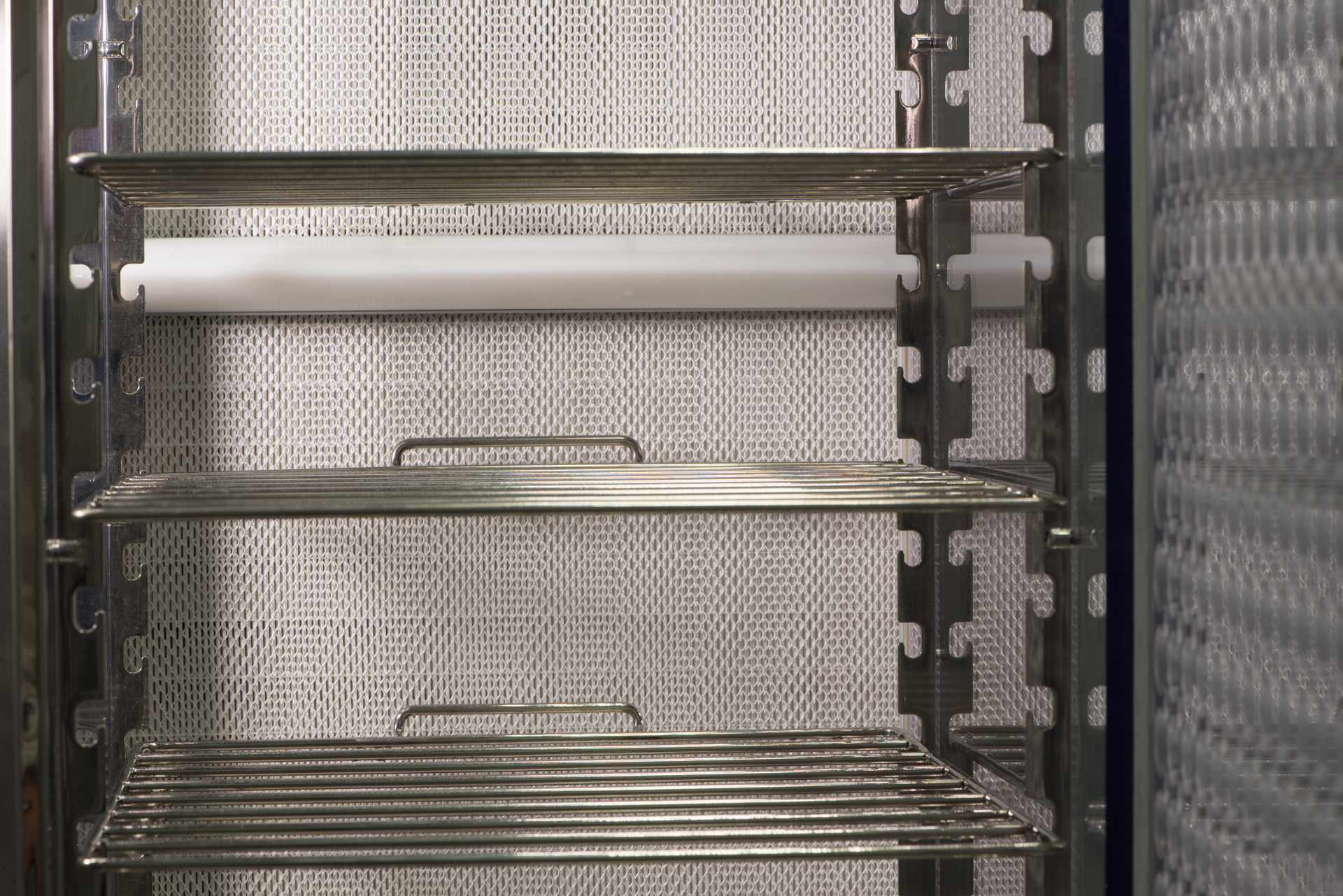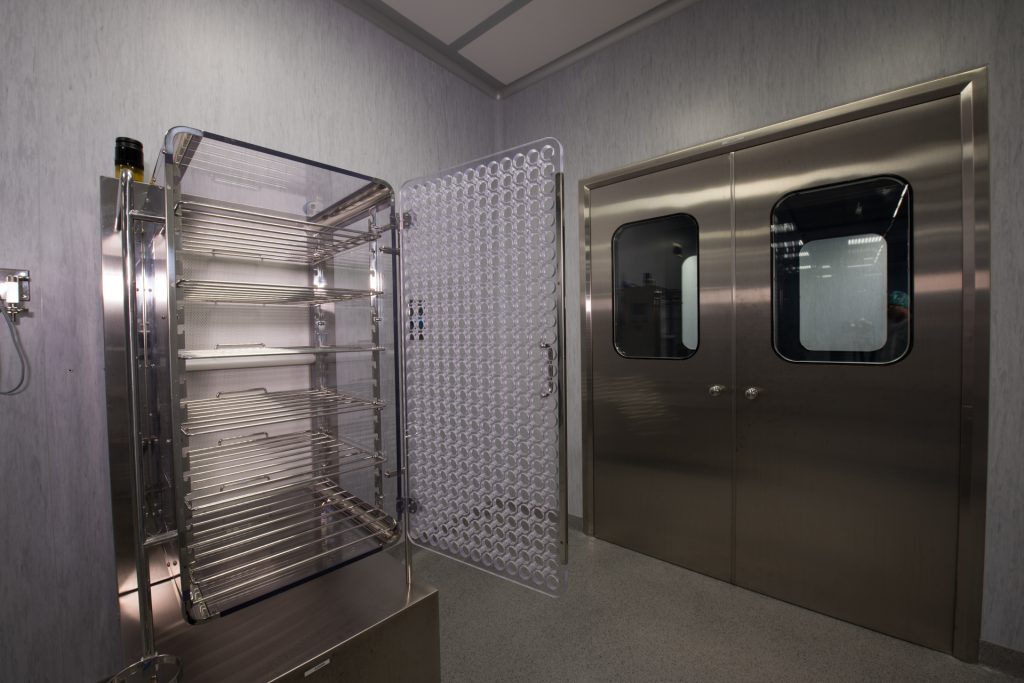
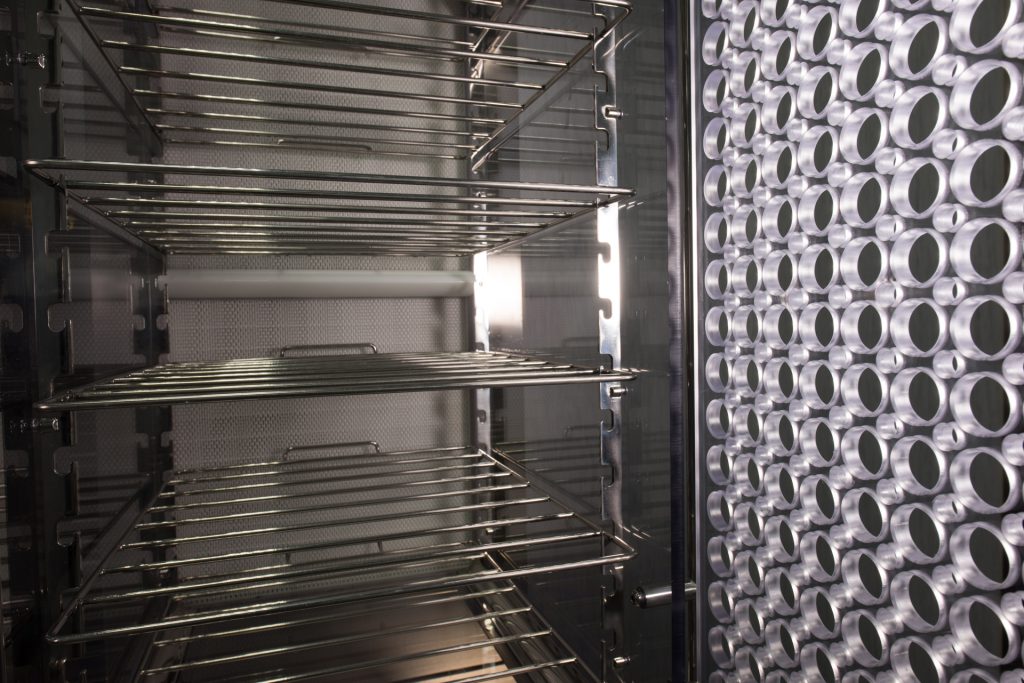
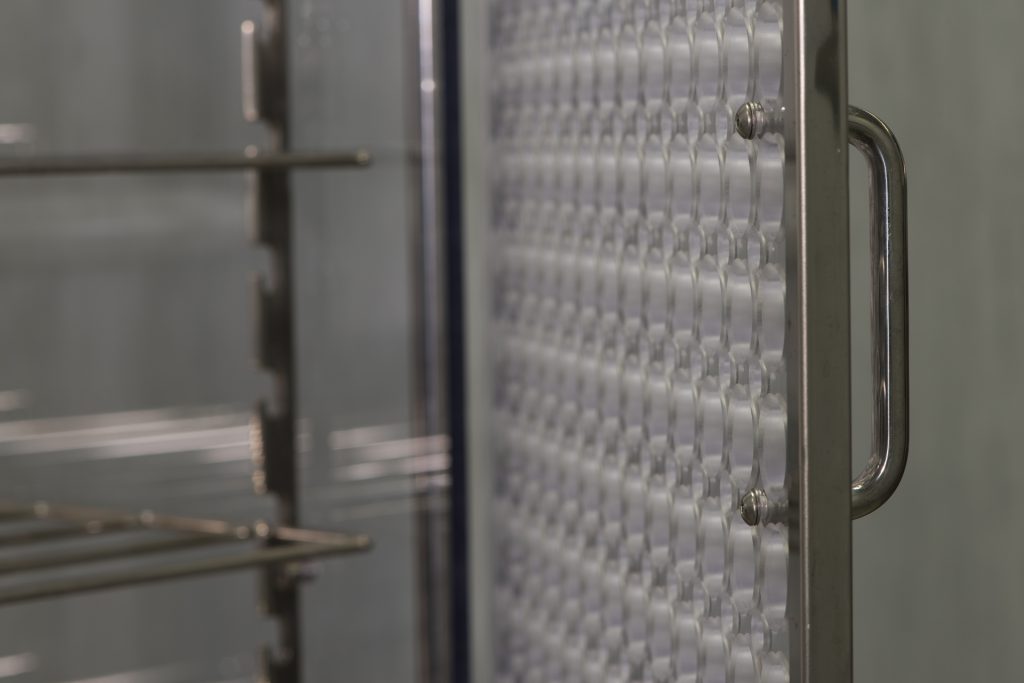
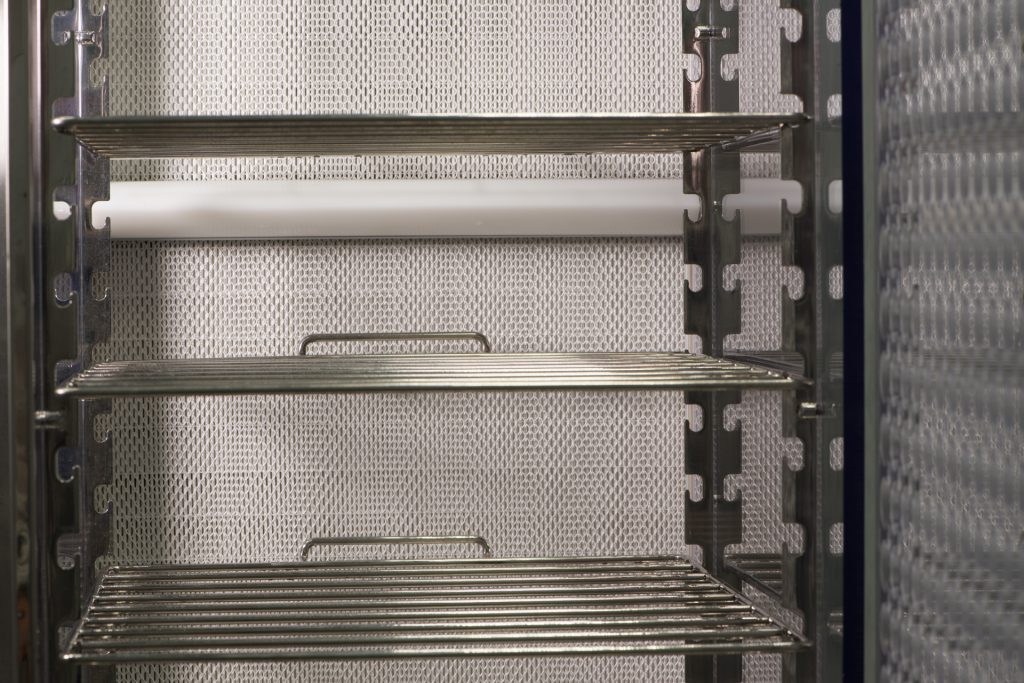
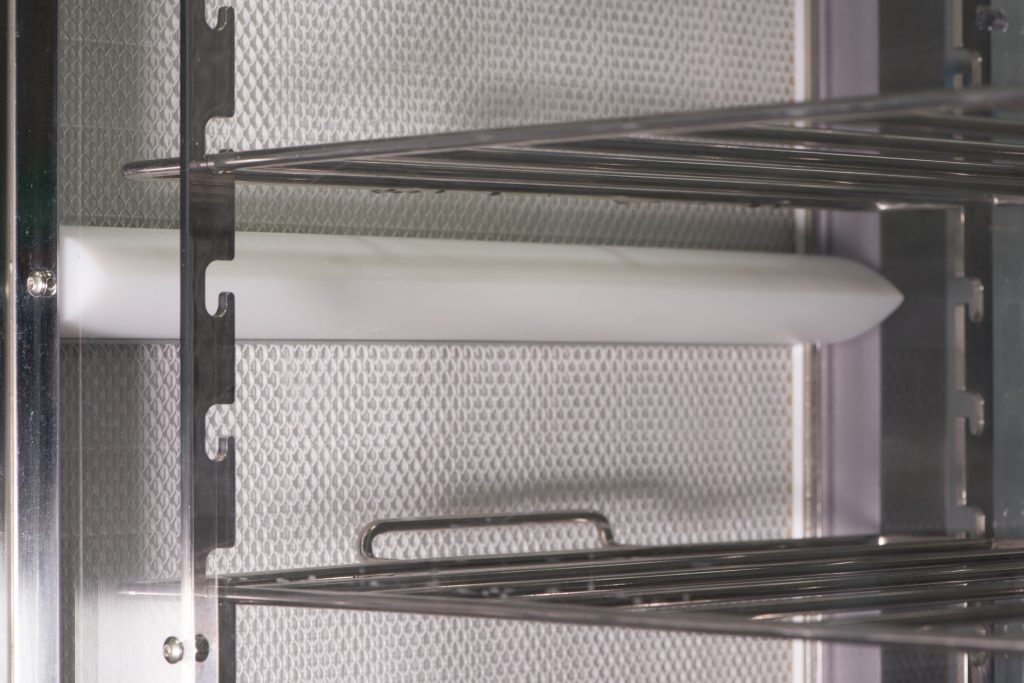
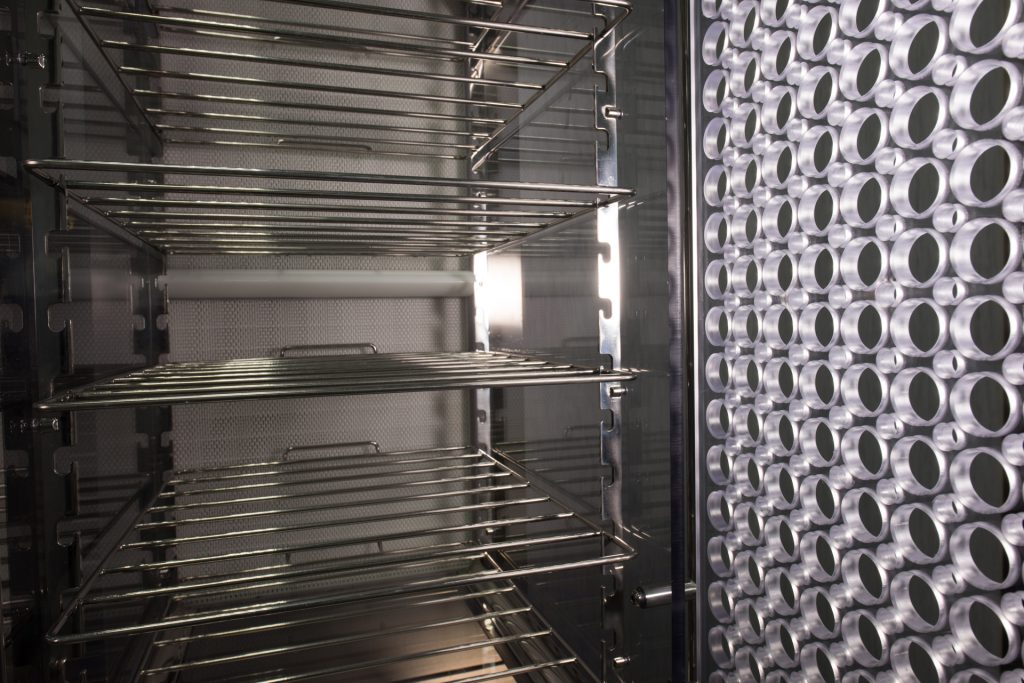
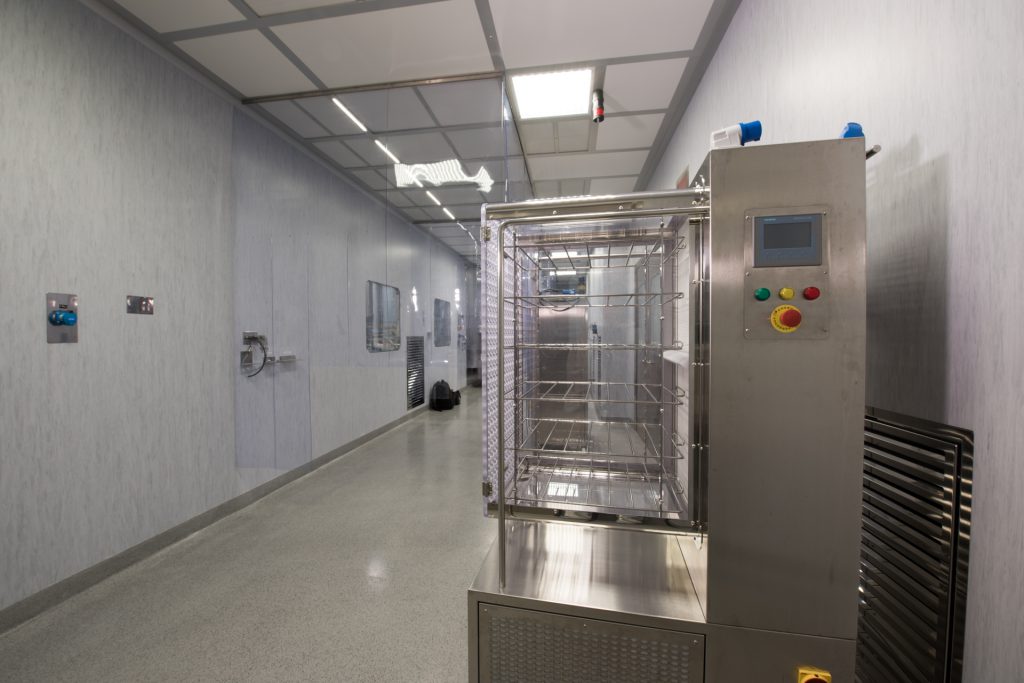
LAF TROLLEY
The LAF Trolley is designed and built to safely transfer, under constant laminar flow, products sensitive to contamination.
The LAF Trolley system consists of a casing made of 1.5 mm thick AISI 304 stainless steel sheet with Scotch Brite finish, which houses:
- the fan motor
- the UPS dry battery system
- the electrical panel
- the PLC
- the PDT for PID regulation of the fan
- the PSL for the filter clogging alarm
- 2 HEPA H14 absolute filters for laminar air flow
- A polycarbonate cabinet with perforated door; inside are height-adjustable shelves made of AISI 316L stainless steel
- 4 swivel castors with stainless steel support and break-resistant polyamide 6 castors (2 of them with brakes)
- A 4” Touch Screen Operator Panel for setting and monitoring the working parameters
CASING
The casing is made entirely of 1.5 mm thick AISI 304 stainless steel sheet with a Scotch Brite finish. It is designed so that every part of it can be cleaned easily. On the left side and on the rear, there are inspection hatches that allow easy access to the components in case of maintenance. On the right side, there is a perforated grille which allows the fan to draw air from the external environment and bring it inside the cabin. On the front of the casing, there are 2 HEPA H14 FCR MINILAM filters (LFA 457x457x68 model) suitable for laminar flow. The trolley is also equipped with connections for filter integrity tests (DOP test). The fan is also housed inside the casing. It draws air from the environment to bring it inside the work cabin.
WORK CABIN
The cabin is made entirely of 12 mm thick polycarbonate with rounded edges to facilitate cleaning operations. The useful operating area of the cabin is 430 x 570 x H 890 mm. Inside the cabin there are removable and height-adjustable shelves, made with AISI 316L stainless steel rod housed on special supports, which are also made of AISI 316L stainless steel. The cabin door is made of 12 mm thick polycarbonate and has 25 mm diameter holes, which allow the air to escape freely without creating unwanted vortices.
MACHINE OPERATION
Through an intake grille, the fan draws in air from the environment and generates a uniform horizontal laminar flow over the entire surface of the shelves, guaranteeing a frontal air speed of 0.45 m/s ± 20%. The frontal speed of the air measured on the filters is ensured by a plug-fan, complete with inverter. The inverter is managed by a differential pressure transmitter integrated in the machine. The differential pressure transmitter allows the control system to be constantly updated on the environmental conditions, intervening appropriately with PID regulation to maintain the set parameters. The state of clogging of the absolute filters, installed inside the trolley, is monitored by a pressure switch, which, once a certain measured pressure threshold has been exceeded, activates an alarm that is shown to the operator on the HMI. The trolley can operate autonomously, i.e. without mains power supply, thanks to a battery pack (Backup UPS), managed by the PLC, which guarantees a minimum continuous operation of 1 hour. However, should it be necessary during use, the machine can operate with electricity from the mains. In the event of a power failure, the system automatically switches to battery operation. All the electronics of the LAF Trolley system are managed by the PLC. Appropriate contacts provide for reporting the status of the equipment and any anomalies, which are signalled by appropriate alarms set in the programming phase. In the event of a machine black-out (a condition which occurs only in the absence of a 220V power supply and completely flat batteries), the system only keeps in memory the working pressure Set Point’s last value, set by the administrator. The machine is also equipped with a SIL3 safety switch on the HEPA filter inspection door. This safety is essential to avoid the risk of contact with moving mechanical parts during normal system operation.
We can build your project
Contact us for useful information on our working method and on the advantages of the OC formula.
